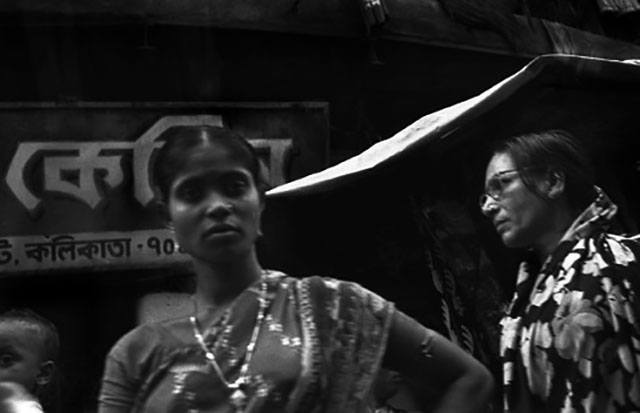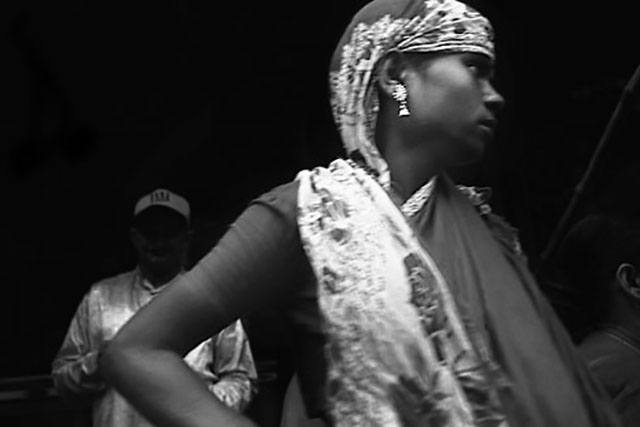India’s sex industry is notorious for its high rates of STIs and HIV in particular.
In a pioneering programme to tackle this issue, the Sonagachi Red Light District has been the focus of a clean-up campaign designed to empower the community of sex workers in Indian’s largest red-light area.
Set up over 25 years ago, the success of the operation means that the rate of AIDS in this part of Kolkata is now similar to the rest of India in the general population. As well as providing outreach services and clinics the programme has also been responsible for establishing other important community facilities including a cooperative bank and outreach clinics.
Here we take a closer look at Kolkata’s mammoth red-light district – Sonagachi – and just what efforts are being made to tackle HIV/AIDS. Plus we examine: how successful have they been at creating a safer environment for the community that lives and works here?
What is the Sonagachi Red Light District?
Situated in North Kolkata, Sonagachi is the largest red-light district in India’s sex industry.
Containing several hundred high-rise brothels, the area is thought to house over ten thousand sex workers. Even though prostitution is legal in India, it is rare to see such a huge volume of prostitutes in one place and Sonagachi is one of only a few ‘mega red-light’ areas in the country (another being the infamous GB Road in Delhi).
Just as in the rest of India, the red-light district of Sonagachi is divided by the class system with distinctions made between four classes of prostitute:
- Poor-class
- Lower-class
- Middle-class
- Rich-class
As a result of these class divisions (and many subsets within), Sonagachi resembles a miniature city with distinct sections for Nepalese, Punjabi and Maharashtrian etc. Each community houses its owns sex workers as well as supporting a micro-community.
Those who are lucky enough to possess Internet connections may also make money from the various offshoots of Indian cam sites (including the popular Delhi Sex Chat).

Fees vary depending on which class of sex worker is being engaged and is also reflected in the type of accommodation that is used. Typically, the rooms are owned by madams who rent them out to street-based workers by the hour.
By day or by night, Sonagachi is thronging with people; men bustle from doorways, some on a break from work, others dropping by on their way home with tourists dropping in to try out the local delicacies.
They come in all shapes and sizes and from every background; from government workers and affluent, chauffeur-driven businessmen to low-paid menial workers.
Women are everywhere too and create the colorful backdrop against which all life is played out. They are on the streets, stood on balconies and staring from windows and doors; alone, in pairs or parading in groups, many are showy and confident hoping to secure a client. It would be impossible, given their overt sexualized demeanours, not to know you have stumbled into a red-light district.
There are male sex workers too, some feminine and slight whilst others are macho and broad.
Sonagachi is a busy and vibrant red-light area that is unlike anywhere else you will find in India. Yet, it has been the focus in recent years of a much-needed clean-up operation to help protect the people who rely on it for their livelihood.
The Clean Up Operation
Though organised prostitution is illegal in Kolkata (brothels, pimping etc.) the operations at Sonagachi are allowed to continue freely, without any fear of government interference.
However, the district is the focus of the efforts of several NGOs and international organisations who are aiming to both reduce the rate of HIV/AIDS and empower the sex workers who live here.
The operation began in 1992 when Dr. Smarajit Jana was approached by NACO, India’s National AIDS Control Organisation to introduce a programme to control the spread of sexually transmitted diseases within Sonagachi.
Initially taking a similar approach to one that had been introduced in Thailand, Jana developed a model which has been hailed as a success story for Sonagachi.

His team worked tirelessly over almost a decade to implement a peer-driven system whereby sex workers did not solicit clients without condom-use.
It took a long while to instigate and it was widely believed that his efforts would fail as, without the full support of the whole community, clients would simply seek a woman who would ‘go bareback’.
The initiative reached a turning point in 1999 when Jana set up the Durbar Mahila Samanwaya Committee (DMSC).
A community based programme, led by older, HIV-positive, former sex workers, the DMSC embarked on an ambitious series of workshops, discussion groups and educational clinics. Together, the community came on board to establish what is now known as a peer monitoring programme where sex workers self-regulate by pressuring others who fail to adhere to the code of conduct on condom use.
The rate of reported HIV positive cases in Sonagachi has fallen significantly as a result of the interventions from around 10% in 2005 to just over 2% in 2014. Current levels are similar to those seen in the general population of India, though figures are sometimes hard to substantiate by area.
Banking on Change
The DMSC continues to operate within Sonagchi by providing mentoring and educational workshops but, as importantly, they also provide other service provision for the community of Sonagachi.
As well as running important access to medical clinics and other services often denied to sex workers, they have also established a cooperative bank.

The bank plays an important role in the community and offers financial support to women who would otherwise not be able to access traditional services including savings accounts and loans.
It has given many women some form of financial independence and means that they are not always in the position where providing unprotected sex is the only way to make cash.
For some, access to banking has meant that they can safely save their earnings.
Though for many this does not mean a way out of a life of prostitution, it does give them access (along with loans) the ability to raise their standard of living or to pay for medical bills. Quite simply, the bank has allowed sex workers in Sonagachi not to have to live ‘hand to mouth’.
The ‘Babu’ Culture
Unfortunately, part of the condom-use operation at Sonagachi is being jeopardized by an unusual culture; the ‘love affair’.
Many commercial sex workers will have just one client with whom they have regular unprotected sex. This is particularly the case in ‘high-end’ arrangements, which might even include some of India’s famous porn stars if the price is right.
See more: The best Desi porn sites.
Just like in the West with the Girlfriend Experience (GFE), these men pay not only to sleep with women but to talk and to cuddle and to be intimate with.
Unfortunately, there is a culture developing of women who fall in love with these ‘babus’. Whilst this might appear unproblematic, the men themselves will often engage in intercourse with other women, thus increasing the risk of spreading sexually transmitted diseases.
The distinction between sex work where you must use a condom and taking a ‘lover’ and not using protection means that women are putting themselves at risk.

Is Sonagachi A Success Story?
Overall, the programme at Sonagachi is widely believed to be a successful one.
The community itself can take much of the acclaim for this as they are now almost wholly responsible for their own STI prevention programme and the mechanics of their banks, clinics and outreach services.
Falling HIV rates, better standards of living and a community that is more empowered and with better self-esteem, the only question about the success is that this model has not yet been replicated in other areas of India or in other countries.
The reason for this?
Principally, there is little documentation about how the efforts at Sonagachi have been achieved. As a result, there is no ‘standard operating manual’ about how to replicate the successes of the DMSC and Dr Jana.
Critically, Sonagachi was a long-established and large red-light district where the community was highly visible and quite static. Sex-workers living alongside one another in a large group like that in Sonagachi was able to create an environment where an organised community could thrive.
With prostitution in India largely taking place behind closed doors and using migrant workers, the chances of being able to reproduce the success of Sonagachi elsewhere are relatively slim.
Featured image via International Women’s Health Coalition/Flickr.
